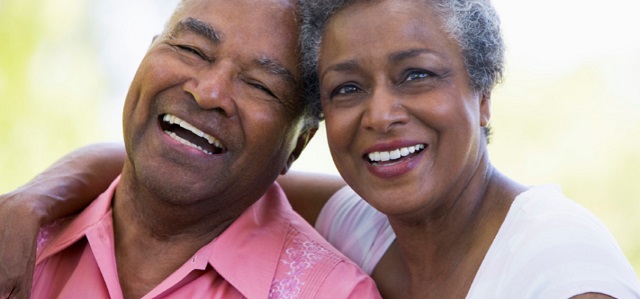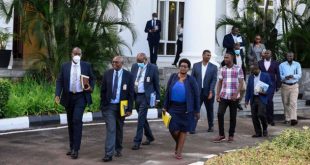
What is social protection and what does it mean to the common person in a poor country like Uganda?
Kampala, Uganda | PATRICIA AKANKWATSA | This is one major question that comes into one’s mind after reading the latest Economic Update released by the World Bank in Kampala on Feb.14.
Social protection in this case refers to popular programmes such as savings with the social security fund, Senior Citizens Grant, Youth Livelihood Programme and health insurance.
According to the update, Uganda’s allocation to social protection expenditure covers only 0.7% of the overall government budget for the Financial Year 2019/20.
The report shows that the existing direct income support programmes in Uganda have low coverage, with the overall reach of the two main programs at only 3%, leaving majority of the population uncovered. This is far lower than Kenya whose social protection covers 6% of the population.
Commenting on the findings, the Secretary to the Treasury at the Ministry of Finance, Planning and Economic Development Keith Muhakanizi, said the blame goes to the politicians who demand more infrastructure services than social protection – education and health.
“Politicians always complain that infrastructure is not enough. It has to be balanced. Look at Bunyoro for example, we have invested in a lot of infrastructure but it is still one of the most vulnerable regions,” Muhakanizi said.
Diego Angemi, the chief for social policy and advocacy at the United Nations Children’s Fund said although Uganda is one of the fastest growing urban countries on the continent, children are still deprived of education.
“For every 10 children that enter primary one, 3 complete primary seven and 1 completes senior six”, Angemi said.
Last year, Kampala Capital City Authority launched Uganda’s first urban social protection program for adolescent girls, targeting girls who are both in and out of school.
Josephine Lubwama the deputy director Gender, Youth and Children at KCCA said most youth are influenced negatively and that is the reason they drop out of school.
Support programmes
Uganda’s direct income support consist of two major and several minor programs that have limited financing. They are the Senior Citizens Grant (SCG) and cash grants given through the Northern Uganda Social Action Fund 3 (NUSAF 3).
The World Bank Economic update report shows that the country’s spending on the two major programs – SCG and NUSAF 3) amounted to merely 0.14 percent of Gross Domestic Product in FY17/18, which is lower than neighboring countries like Kenya and Rwanda who spend 0.4 percent and 0.3 percent of GDP, respectively, on direct income support.
Further, a large part of spending on SCG and NUSAF 3 is provided by donor grants or concessional loans, raising the concerns over their medium to long-term sustainability.
The new report comes at a critical time when the government is in the morning hours of implementing the country’s Third National Development Plan.
In relation to the economy, the report notes that although Uganda experienced strong economic growth in the 1990s and 2000s, there has been a slowdown in the recent past citing high fertility rates amidst low productivity.
As a result, the report states, one in every five Ugandans still live in extreme poverty and that more than a third live on less than $1.90 a day (in 2011 Purchasing Power Parity dollars). Beyond poverty, the report states that many households in the country remain vulnerable.
“These households are susceptible to income fluctuations, food insecurity, and often do not have the means to cope with shocks that they may experience. The most common shocks include droughts, irregular rains, serious illnesses, or accidents to the main income earners,” the report states.
“Social protection programs are important policy tools for building resilience, mitigating risks and supporting households to invest in human capital. When individuals are vulnerable, it is difficult for them to make long term investments to improve their own livelihoods or educate their children,” reads the report in part.
Way forward
Muhakanizi said the political class needs to strike a balance of resource allocation towards social protection and investing in infrastructure to improve people’s livelihoods.
“We introduced agriculture insurance but it is not easy to sell it to Ugandans since their political leaders keep on telling them that what they need is infrastructure,” Muhakanizi said.
Muhakanizi also advised that instead of focusing on the older people as the report states, it is better to provide social protection to children since they are the future leaders.
The World Bank Manager for Uganda, Tony Thompson, said social Protection is about investment in among others; human capital, protection against shocks, direct income support programmes, nutrition sensitive, safety nets and support to early childhood education.
“Social protection programmes can provide an answer to some of these challenges. Expanding social protection could have positive impact on growth and would provide social safety nets to reduce vulnerability to shocks, build equity, and maintain high labour productivity,” he said.
“Two out of three people who get out of poverty fall back – that is about 1.4 million people in the last household survey conducted in 2016. We need to consider the importance of investing in people, building their human capital, and providing them with the tools and assets to manage shocks and reduce their vulnerability,” he added.
Ramya Sundaram, a senior economist at the World Bank said there is need to prioritize social protection expansion to the most vulnerable people and areas to improve people’s standards of living.
****
 The Independent Uganda: You get the Truth we Pay the Price
The Independent Uganda: You get the Truth we Pay the Price


